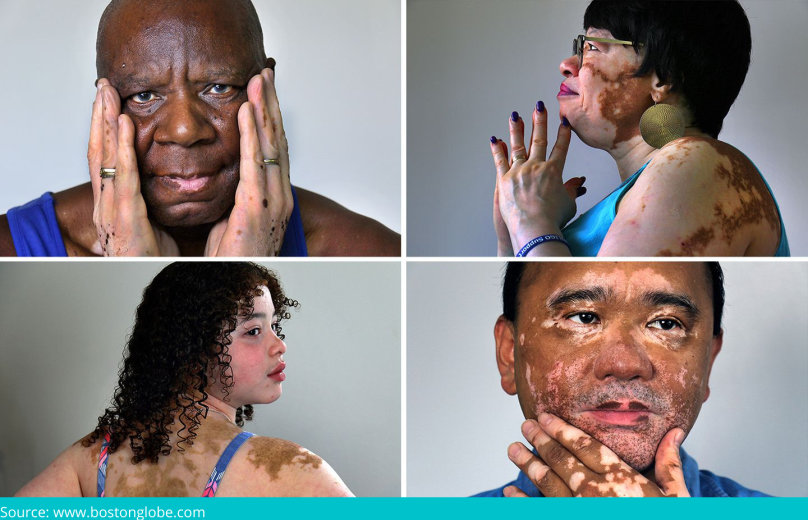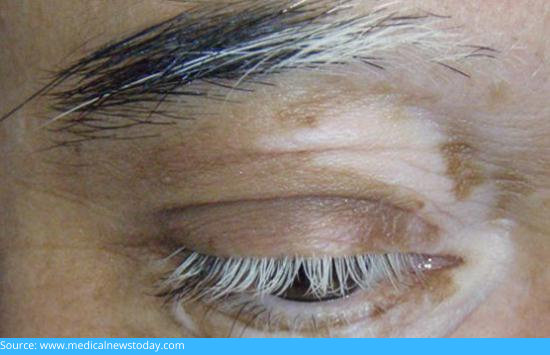We are all aware of the English expression “don’t judge a book by its cover” – a metaphor for not judging the value or importance of something or someone just based on exterior looks. However, ironically people tend to forget this more often than not.
Most people usually form an opinion about a person they meet for the first time by examining their hairstyle, skin, and visual appearance, rather than knowing their thoughts and understanding their life experiences.
Dr. Archit Aggarwal, the founder of KDC Clinic, says that skin conditions make people very concerned about societal stigma and discrimination. He is one of the renowned dermatologists in India who believes that everybody deserves to be comfortable in their skin.
In this article, we shall discuss a skin condition called vitiligo, its symptoms, causes, treatment, and prevention.
What is vitiligo?

Vitiligo, also known as leucoderma, is a condition in which pale white patches (macules) appear on your body. It is a long-term skin disorder caused by a lack of melanin which gives skin its natural color. Vitiligo can affect any area of your body, although it is more common in the face, neck, and hands, as well as in skin folds.
Unpredictability is one of the most aggravating elements of vitiligo. It is difficult to predict whether it will get more active or stable.
Dr. Archit Aggarwal, a renowned skin and hair specialist in Faridabad, says that vitiligo patients tell him they are frequently concerned about waking up and finding a new white spot on their skin. They are worried about their future and fear that their vitiligo will worsen.
Symptoms of vitiligo

Vitiligo is a condition in which your natural skin color is lost. This is known as “depigmentation” or “loss of pigment”. Pigment loss can occur anywhere on the body, including:
- Skin
- Hair (eyebrow, scalp, beard, eyelash)
- Eyes
- Inside the mouth
- Genitals
Vitiligo causes most people to lose pigment in their skin. Skin that has been impacted may brighten or turn entirely white. Many people have no other warning signs or symptoms. They appear to be in perfect health.
However, a few people have said that their vitiligo-affected skin itches and is painful.
Dr. Archit Aggarwal, a highly experienced dermatologist in Faridabad, adds that as macules (white patches on the skin) lack melanocytes, they are more sensitive to sun rays. Due to this, while the rest of your skin will tan in sunlight, your skin with white patches will cause a burning sensation.
Causes of vitiligo
Studies have shown that vitiligo affects approximately 1% of the world’s population. The causes of vitiligo are not clearly known, but there are a few possibilities that have been proposed:
- Autoimmune disorder: The immune system of the affected person may produce antibodies that damage melanocytes.
- Genetic considerations: Certain variables that may raise the risk of developing vitiligo can be passed down through generations. Vitiligo runs in families in about 30% of instances.
- Neurogenic factors: Nerve endings in your skin may emit a chemical that is poisonous to melanocytes.
- Self-destruction: Some deficiency in the melanocytes may lead them to self-destruct.
- Stress: Certain circumstances, including physical or emotional stress, might also cause vitiligo.
Because none of the answers seem to account for the illness fully, vitiligo is probably due to a combination of different factors.
Treatment options
Some people do not seek treatment for vitiligo and choose to use cosmetics instead, like make-up, skin dyes, etc., to camouflage their white patches. However, this can be time-consuming and has to be repeatedly applied.
Fortunately, there are some treatments available that are long-lasting and more effective. Following are some of the treatment options available for you –
Oral medications
- Steroids: Oral corticosteroids, like Prednisone and Betamethasone, can suppress the immune systems and aid in slowing down the spread of vitiligo.
- Immunosuppressants: immunosuppressants like methotrexate, azathioprine, mycophenolate mofetil (MMF), etc., calm down your immune system, thereby slowing down the generation of new cells.
Therapies
- NBUVB phototherapy: narrow-band ultraviolet B (NBUVB) phototherapy or light therapy has been seen to delay or stop the growth of the active vitiligo. It has also been seen to be more effective if combined with calcineurin inhibitors or corticosteroids.
- PUVA (psoralen + ultraviolet A): this therapy combines psoralen, a plant-derived compound, with phototherapy (light therapy) and helps restore color to the vitiligo patches.
- Depigmentation: if your vitiligo has progressed and you have tried other treatments without success, you may opt for depigmentation. In this therapy, a depigmenting solution is given to unaffected patches of skin. This will lighten the skin over time, blending it with the white patches.
Surgical methods
- Blister grafting: In this procedure, the doctor employs suction to create blisters on the pigmented area. After this, the blisters’ tops are transplanted to the discolored area.
- Skin grafting: Your doctor will do this surgery by transferring tiny portions of pigmented, healthy skin to spots affected by vitiligo. This method may be used if you have small areas of vitiligo.
- Cellular suspension transplant: In this surgery, your doctor removes some normal skin tissue, inserts the cells into a solution, and then implants those cells to the affected area.
The treatment you receive is determined by your age, the amount of skin involved and its location, how rapidly the disease is advancing, and how it affects your life.
Please consult with Dr. Archit Aggarwal, among the leading skin specialists in Faridabad, for the most suitable treatment for you.
Prevention
As the exact causes of vitiligo are not clear, there is no known prevention. However, since excess sun exposure can cause depigmentation and skin damage, limiting your exposure to the sun is best.
Many people with vitiligo question how they can deal with it and if their food and lifestyle choices might help them avoid a relapse or aggravation of the disorder.
While there is no official “vitiligo diet,” eating nutritious meals and drinking plenty of water are the best steps you can take. You may also benefit from foods containing phytochemicals, beta-carotene, and antioxidants that boost the immune system.
Vitiligo patients have suggested the following meals as being beneficial to their condition:
- apples
- bananas
- green leafy vegetables like kale and romaine lettuce
- chickpeas (garbanzo beans)
- root vegetables, particularly carrots, beets, and radishes
- dates and figs
Conclusion

Vitiligo is an autoimmune disorder in which the cells that create skin pigments are attacked and killed, resulting in white spots on the skin. An individual with vitiligo may acquire low self-esteem as a result of this. That, in turn, could lead to anxiety and emotional strain as well as a desire to isolate.
Vitiligo is a condition that can last a lifetime. It cannot be cured, but you can take steps to treat it and keep it from getting worse.
Please schedule an appointment with Dr. Archit Aggarwal, a top-notch dermatologist in Faridabad, to cope with any anxiety you may be experiencing due to the condition and learn about treatment alternatives.

